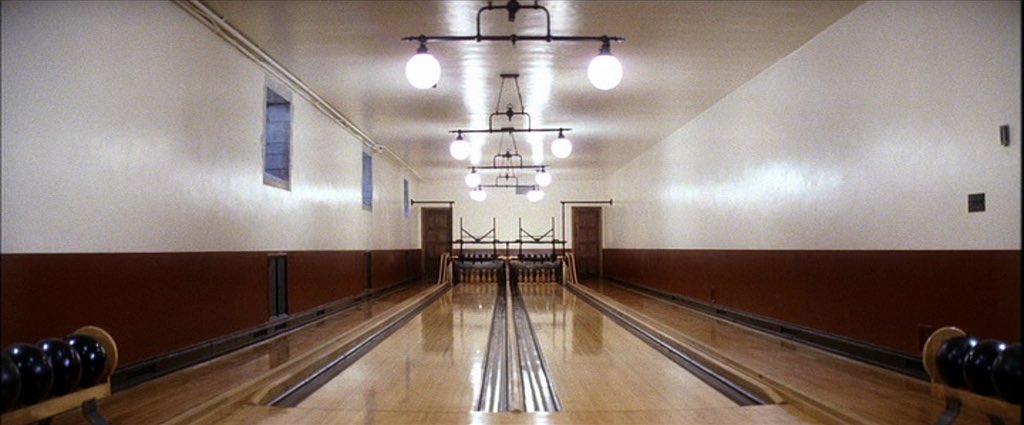I rate 6/10 – Its aight, I’ve had better in a school cafeteria
Memorable scene – The red bathroom scene
Film Element Focus – Cinematography
I rate 6/10 – Its aight, I’ve had better in a school cafeteria
Memorable scene – The red bathroom scene
Film Element Focus – Cinematography
One Point Perspective – All focus goes to one vanishing point on the horizon. The easiest example to visualise would be a corridor.

Symmetry – The set reflects itself along the centre axis which the camera is aligned on as if through a mirror.

Deep Focus – The focus is on the foreground, midground and background.

Steadicam Tracking Shots – The camera tracks a character or object through a scene but the camera is suspended between axes such that the movement of the camera is independent of the stabilizer or cinematographer

A lot went well such as the speed of getting the set together and solving problems or the teamwork between us.
A few things that could have gone better would be not being able to use the conference room or the acting which could definitely use some work (especially mine).
I’m also mildly perturbed by the fact that nobody challenged any of my ideas
Angles
Low angle
High angle
Overhead View
Dutch angle
Eye Level
Shoulder Level
Hip Level
Knee Level
Ground Level
Movement
Pan Left/Right
Crab Left/Right
Track In/Out
Ped Up/Down
Tilt Up/Down
Types
Extreme Close Up
Close Up
Medium Close Up
Master/Medium Shot
Medium Long Shot
Long Shot
Extreme Long Shot
Diegetic perspective:
Diegetic perspective is when the audience looks at the events from an outside perspective. This can also be referred to as ‘This Person Perspective’
Intra-diegetic perspective:
Intra-diegetic perspective is when the audience takes the perspective of an established character. This technique is used a lot in horror films to ground the audience in the horror. This can also be referred to as ‘First person perspective’.
Example: Psycho – shower scene
Extra-diegetic perspective:
Extra-diegetic perspective is when a character directly addresses the fact that the audience is there, recognising the audience as an external entity either simply looking in or almost as a character in the world, even if for just a moment. This can also be referred to as ‘Second person perspective’.
Example: The Emperor’s New Groove
Cinematographer (n):
A person who oversees the camerawork in a film
Cinematography (n):
The art of of photography and camerawork in movies
I rate it a 7.8/10, too much water
Memorable scene – tears in rain (duh)
Film element focus – mise-en-scene
mise-en-scene translates from french to ‘setting’ and is roughly defined as ‘everything in the scene’
The top 10 box office films of 2018 follow various trends such as being tied to a mass-media franchise or huge conglomerate like 6 of them being owned by Disney or 8 of them being a sequel or remake. This trend is followed throughout the top 20 as well.
Communicators – Most films are designed to communicate ideas like themes and morals
Knowledgeable –
Caring – A film maker can use the medium to raise awareness for social issues
Risk-Takers – A film maker has to take risks with the creative process to achieve a creative vision
Principled –
Reflective –
Inquirers – Some films can inquire about serious issues
Balanced – A film maker has to balance creativity with realistic standards
Open-minded –
Thinkers –